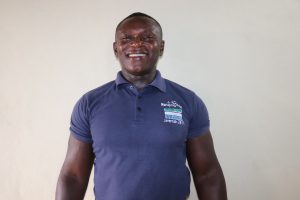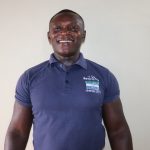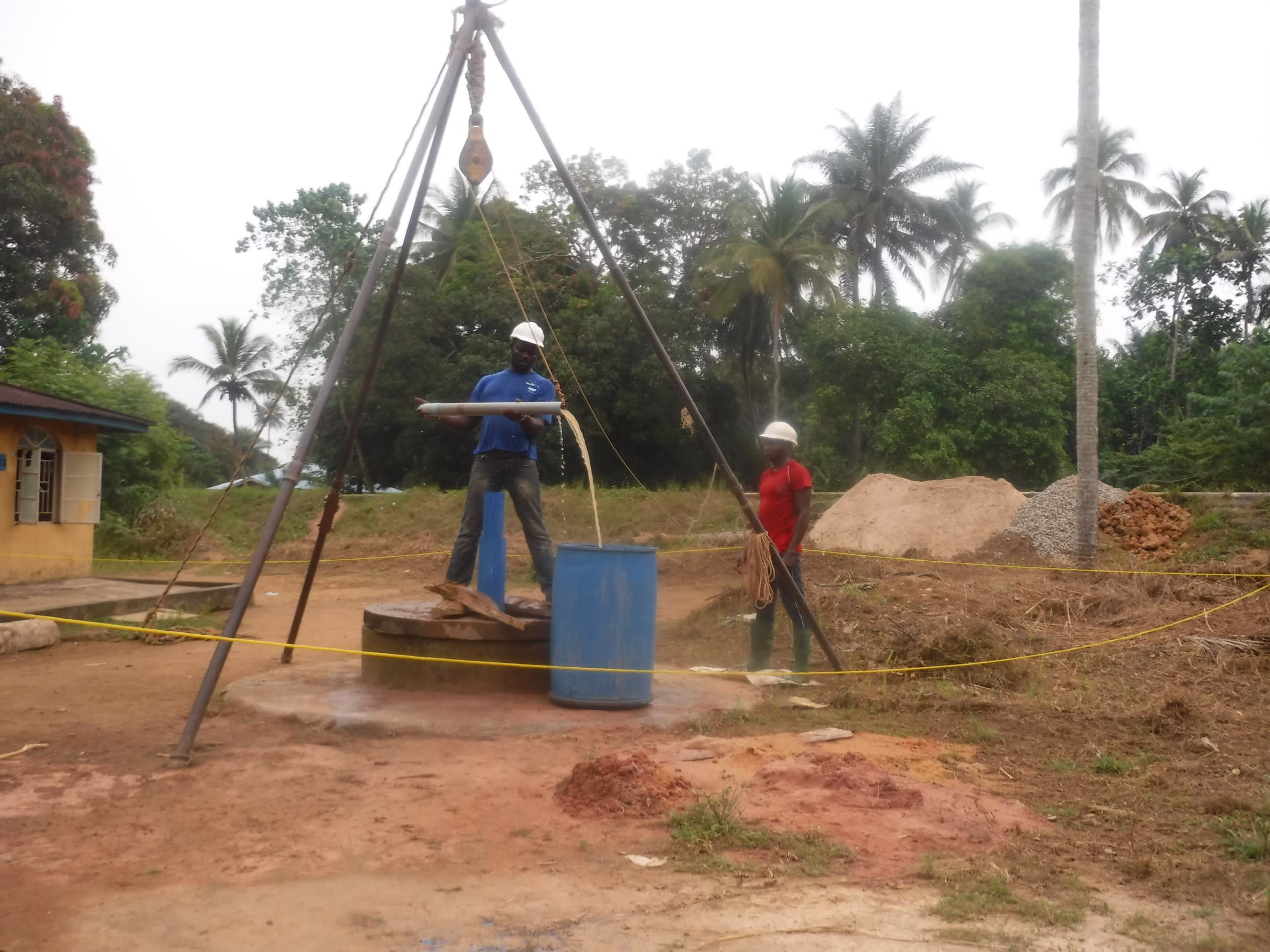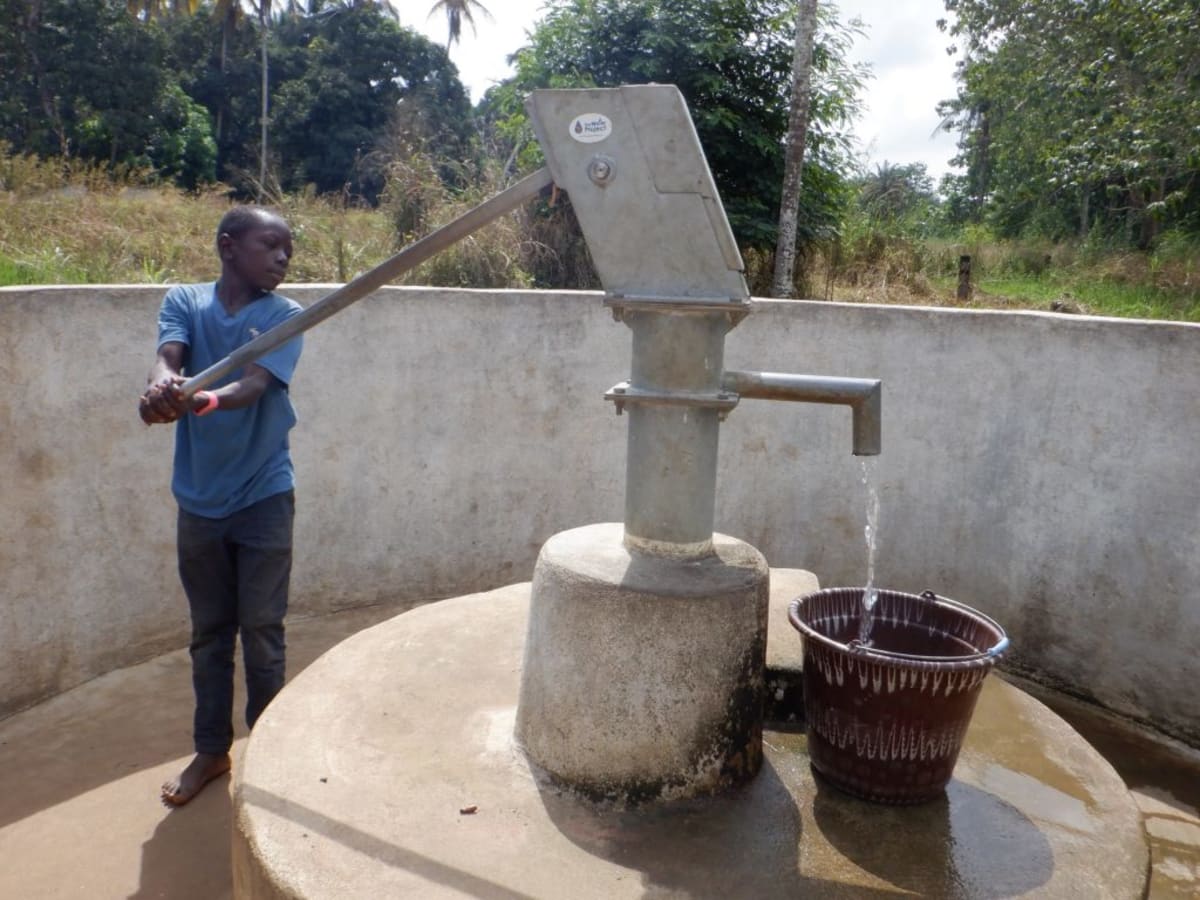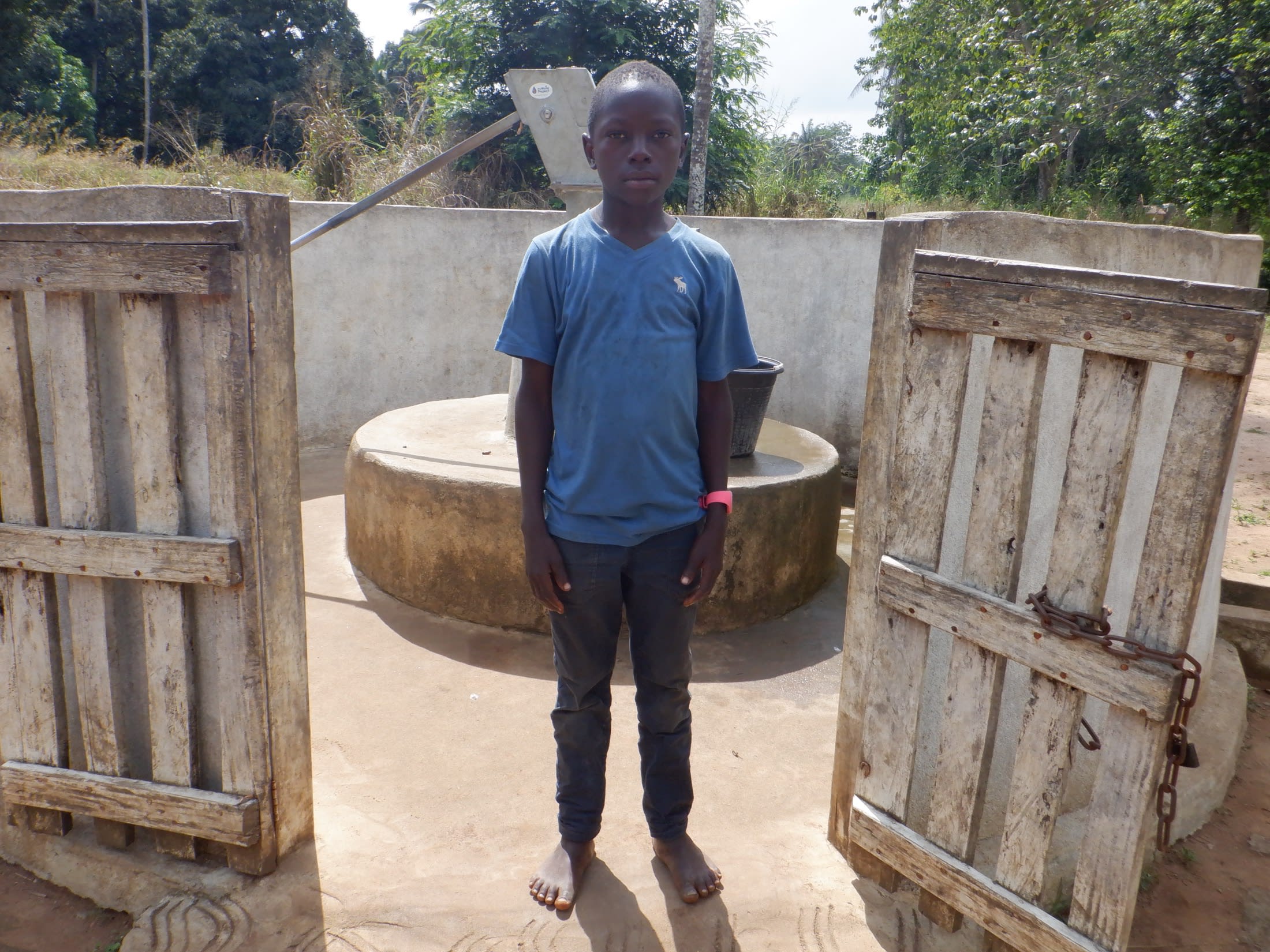Gbaneh Bana's well is dry most of the year. This leaves the 664 community members with only one option: a nearby stream.
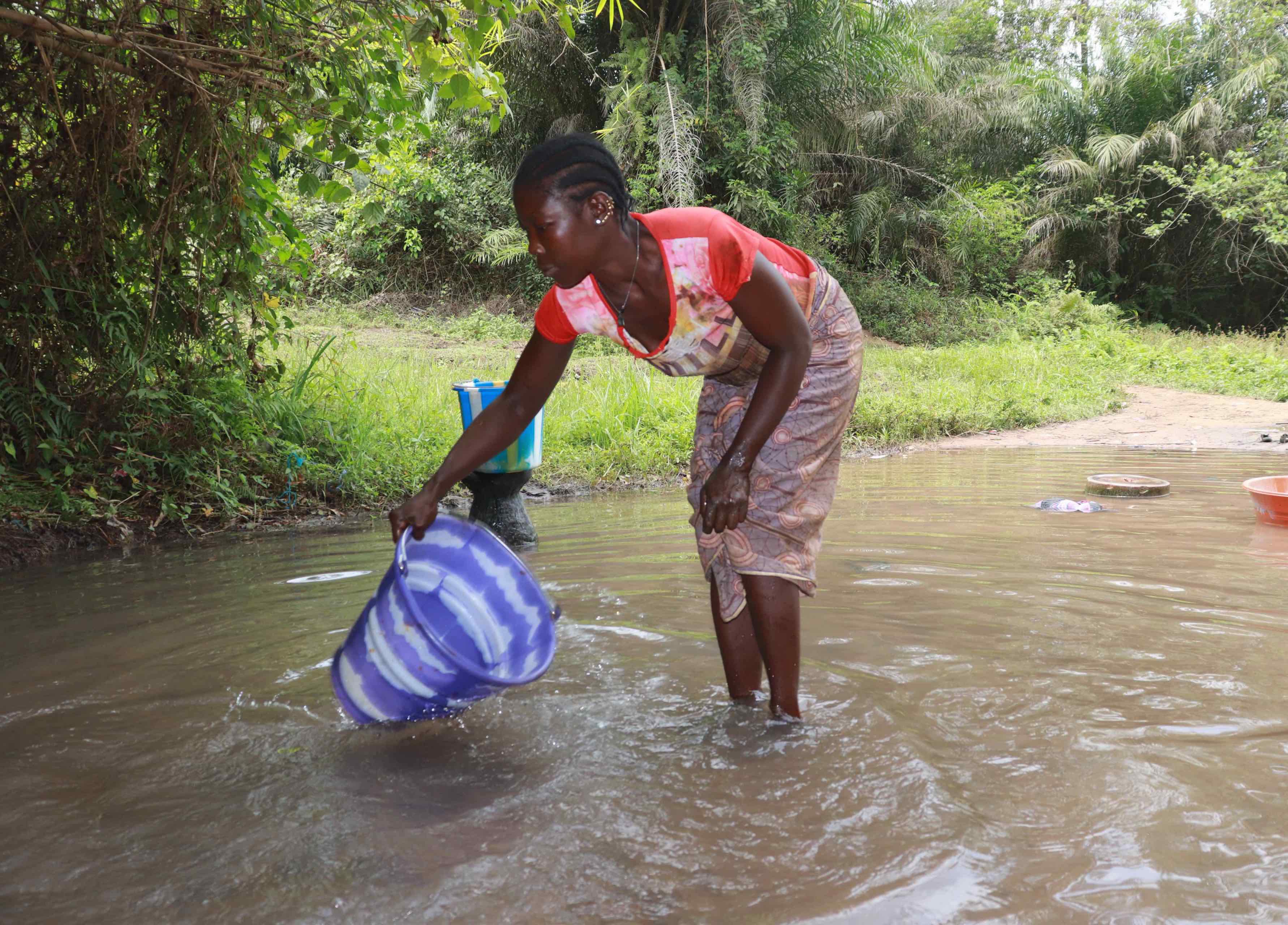
I remember as a small boy growing up in the village having no other source of drinking water but the stream. At the time, my grandmother knew no better, and even if she did, there was no other source of drinking water. That was more than 40 years ago. Still, the children of Gbaneh Bana face these conditions. Back then, the danger from fertilizers was not as rampant as it is now. Looking at the faces of these children, I see myself.
I went down the hill to inspect the water source, and, to be honest, there will never be a second time. It was so difficult that I ended up crawling on my hands and knees to make it back up. All this happened with no water on my head.
Community elders advise anybody fetching water to do so in daylight to avoid accidents. Groups of people go at a time, forming a chain to pass the water more easily up the hill. People prefer to use closed containers so they can avoid spillage while fighting to make it up the hill. Steps have been cut into the hill to allow easier access, but still, women are strongly discouraged from carrying a child on their backs while trying to climb or go down the hill.
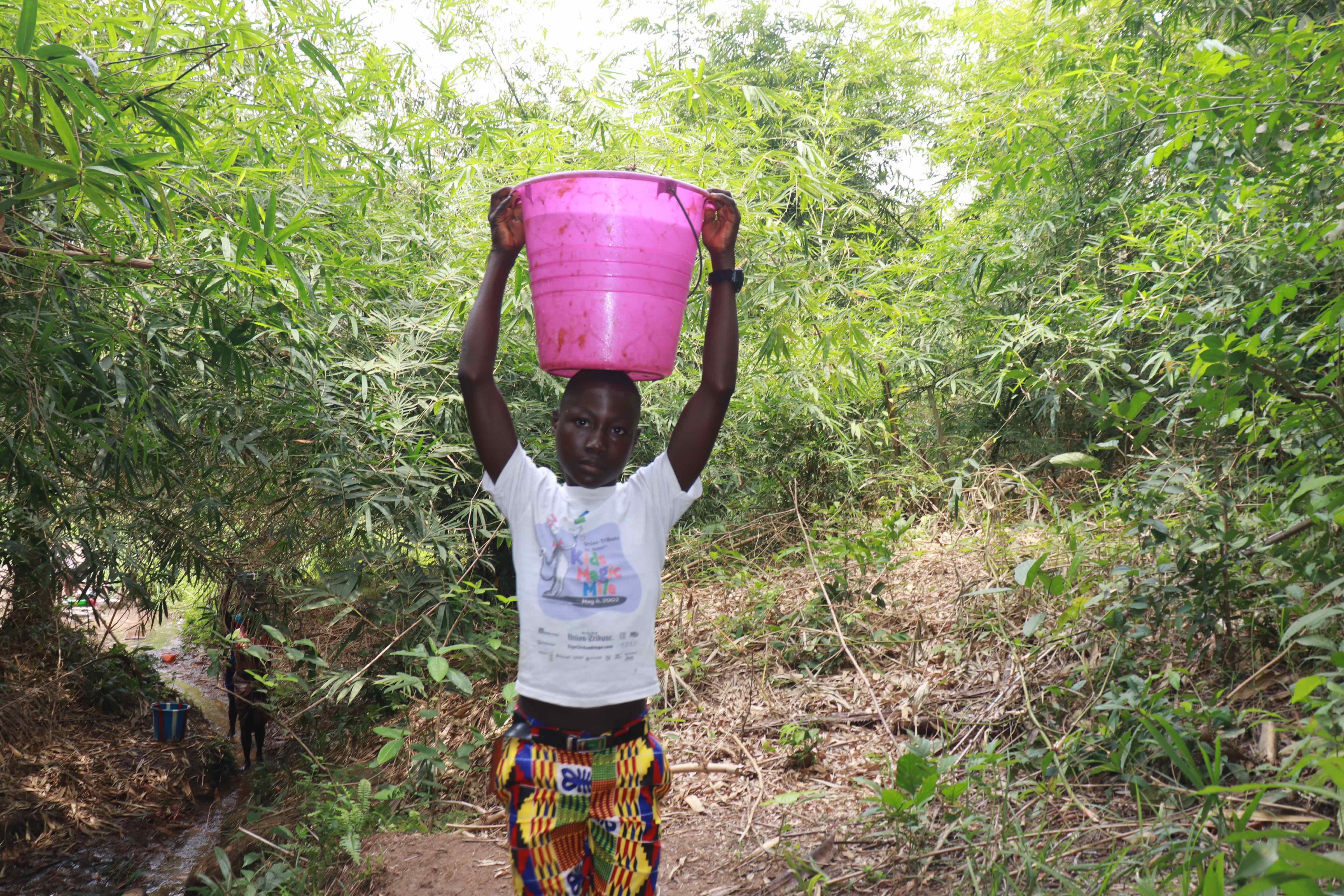
The road leading to the stream is a footpath surrounded by vegetation, which increases the chances of being bitten by snakes or poisonous spiders. The person fetching also stands a chance of bringing home a leech, which can be unknowingly scooped and carried home.
And, on top of all this, fetchers need to cross the busy main road (seen in the background of the picture below) in order to fetch water, which is especially dangerous for children.
14-year-old Mohamed K. said, "Apart from fetching water for my house, I also fetch water for other people in the community for a small stipend. I gather empty containers from members of the community with my friends and go down the stream to fetch water for them. There is an old wheelbarrow that we use after bringing the water up the hill. The wheelbarrow helps us greatly and we are able to make money for our lunch at school. The most difficult time is early in the morning when we have to make our way to the stream; the water from the dew soaks our feet."
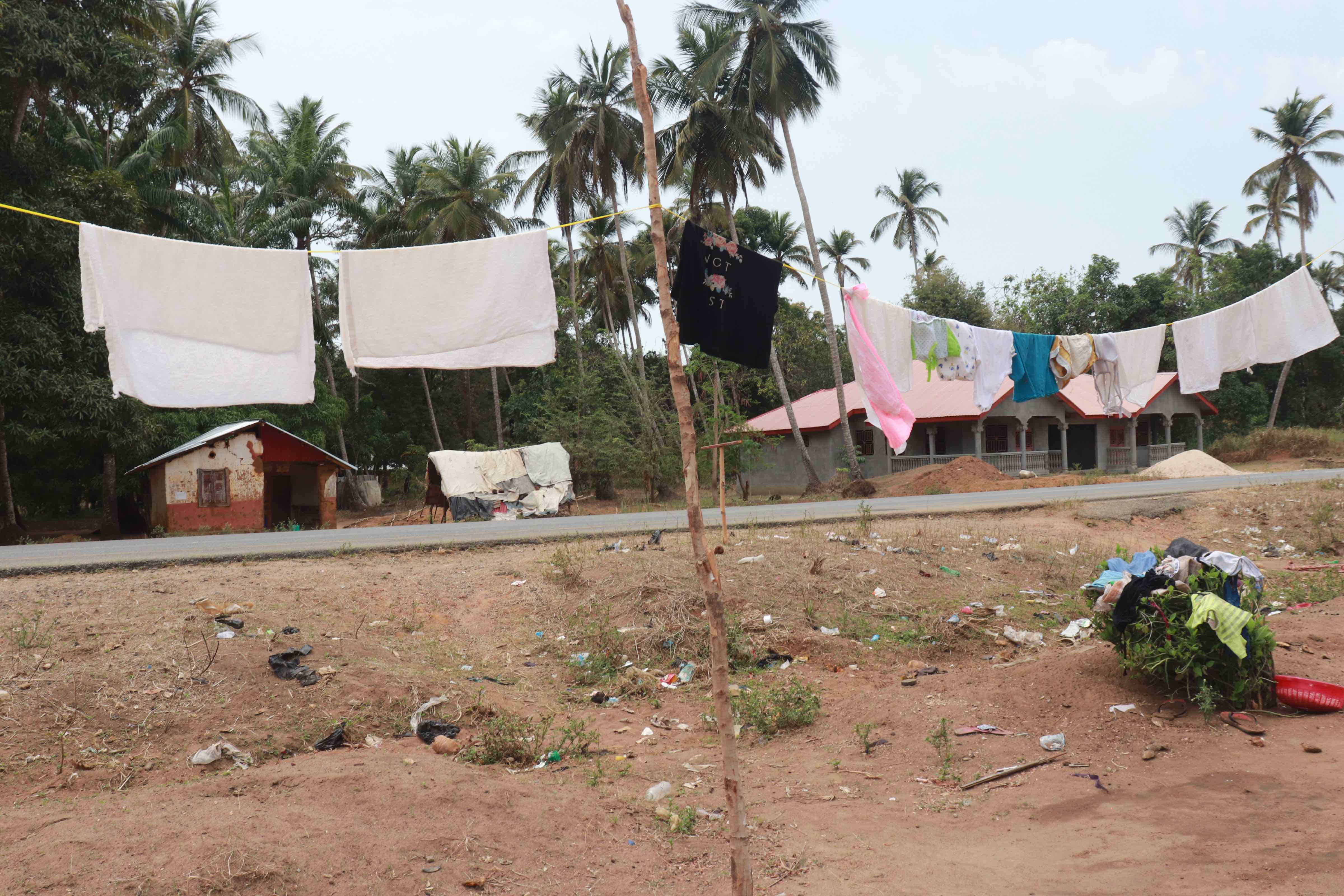
Although the stream provides sufficient water for the community all year, the water quality is unsafe. Standing by the stream, one can see tadpoles, fish, and algae in the water. It is also contaminated by runoff from the road and farms uphill.
According to interviewees, the reported consequences of using water from both the stream and the community's well (when it's functioning) range from a minor stomachache to diarrhea, dysentery, vomiting, typhoid and, the deadliest of all, cholera. The lack of frequent clinic or hospital visits tends to drive a situation from not so bad to deadly. And, some villagers believe sickness is the handiwork of supernatural forces that can only be defeated with the use of indigenous medicines.
"I am the current headman of the Gbaneh Bana community," said Peter Kamara, 50. "I have lived in the community my entire life. I am not the oldest, but I have been chosen to lead my people. Having been entrusted with such an honor by my peers and endorsed by the local chiefs and Paramount, it is my responsibility to make sure all areas of the village with issues are addressed. I cannot get over having my children and other children in the community risking their lives day after day to bring water back home."
Here’s what we’re going to do about it:
Well Rehabilitation
The well marked for this overhaul is dry for a few months every year and needs major work to supply adequate, clean water to the community year round. The pump will be removed, and a hand auger will be lowered inside and powered by a drill team. This hand auger will allow the team to drill several meters deeper to hit a sufficient water column that will ensure the well supplies water throughout all seasons.
As the team drills, casing will be installed, transforming the bottom of this hand-dug well into a borehole. PVC piping will connect this lower system directly to the pump, a construction that we know will also improve the quality of water.
Once this plan is implemented, everyone within the community will have access to safe drinking water in both quality and quantity, even through the dry months.
Hygiene and Sanitation Training
There will be hygiene and sanitation training sessions offered for three days in a row.
After our visit, the hygiene and sanitation trainer decided it would be best to teach community members how to build a tippy tap (a hand-washing station built with a jerrycan, string, and sticks). They will use these tippy taps for handwashing demonstrations, and will also teach about other tools like dish racks and the importance of properly penning in animals.
These trainings will also strengthen the water user committee that manages and maintains this well. They enforce proper behavior and report to us whenever they need our help solving a serious problem, like a pump breakdown.

 Borehole Well and Hand Pump
Borehole Well and Hand Pump









